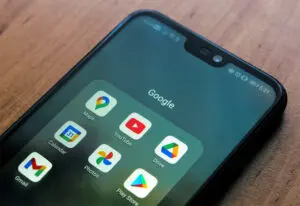
TikTok Branding: Do You Need It To Keep Up?
Brands are ever-changing. So it’s no wonder that branding is as well. A recent report from Talkwalker and HubSpot looked at social media trends for 2020 and how these are changing the brand landscape (brandscape?) as we know it. At the top of the list is TikTok, the video virality-inducing app that is slowly taking over as one of the most influential among Gen-Zers and Millennials.
As TikTok rises in popularity––with one billion videos viewed every day by its one billion users––it might be time for you to consider it as a viable brand outlet. But does your brand need to be on TikTok to keep up? What are the benefits of using the app, especially when videos last, at most, sixty seconds?
We’ve detailed all those questions and more so you can make an informed decision for your brand moving into the next decade.
What is TikTok?
The TikTok app focuses solely on short videos. According to their site, their “mission is to inspire creativity and bring joy.” The site has been likened to a video version of Instagram or as similar to Vine, Twitter’s former video-sharing app.
The China-based company is headed by Zhang Yiming who created ByteDance, TikTok’s parent company. TikTok is known as Douyin in China and, in 2017, ByteDance purchased Musical.ly which later merged with Douyin to form the TikTok available today.
Musical.ly was, similarly, a video-sharing app but focused on lip-sync videos. According to its Wikipedia page, “the app also allowed users to browse popular ‘musers,’ content, trending songs, sounds and hashtags, and uniquely interact with their fans.” Hop onto the TikTok app’s Trending link today, and you can still find many videos and challenges centered around music and lip-syncing.
Since its launch in 2016, the TikTok app went beyond one billion installs from the Apple Store and Google Play and is valued at $75 billion. With the tagline “Make Your Day,” the platform features videos, music, video editing, interaction, virtual money, live streaming, and profiles. Given its prolific nature, it’s no wonder advertisers are flocking to the site.
TikTok branding
Up until April of 2019, TikTok did not allow ads on its platform. In October of this year, TikTok leaked their pitch deck to advertisers detailing demographics and core ad products.
According to the deck, TikTok doesn’t “spark trends, we set them on fire,” and audiences are encouraged to “make every second count.” The core products offered to advertisers include hashtag challenge, brand takeover, in-feed video, branded lenses, and top view.
Hashtag challenge
TikTok hashtag challenges encourage user-generated content for brands. On their pitch deck, TikTok said 35% of users partake in challenges, for example, putting a branded song on a music page. As part of their case studies, GUESS’s #inmydenim hashtag challenge generated 10.4m video views. Whereas Universal Picture’s #FindYourMagic resulted in over 20K video submissions.
Brand takeover
For this core ad product, the brand’s ad is the first thing users see when opening the app. The three to five second video has a “guaranteed 5,000,000 impressions per day,” according to TikTok.
In-feed video
In-feed videos seamlessly weave a brand’s video into a user’s feed. The company attempts to “make the ads appear as native as possible” for the five to fifteen second video. This tactic is very similar to Instagram Stories ad integration.
Branded lenses
TikTok produces both 2D and 3D branded lenses in-house. These ads are more like brand partnerships and feature on the Trending tab as such.
Top view
The last ad product TikTok offers is Top View. This integration begins as a Brand Takeover and fades to an In-Feed Video ad up to 15 seconds long. The other distinctive factor for this option is the “category exclusivity” this offers––only one brand per day can have Top View.
The one thing the video app does not allow? Political advertising. With other social media platforms like Facebook under fire for rampant political advertising, TikTok has opted to stay out of the conversation. When speaking to the decision, TikTok’s VP of Global Business Solutions, Blake Chandlee, (and former Facebooker) said: “Any paid ads that come into the community need to fit the standards for our platform, and the nature of paid political ads is not something we believe fits the TikTok platform experience.”
Part of TikTok’s appeal for brands is the different type of engagement it offers. For example, when users scroll through the platform, they are “immediately immersed into a video, which makes a user more immediately dialed-in” as opposed to merely scrolling by. This feature is especially useful for marketers trying to reach the more elusive Gen-Zers.
What users now look for in brands
Traditional brands were just that––traditional. They advertised on billboards, in the newspaper, and maybe branched out into television and radio. As technology grew, the avenues through which brands could market did as well. Now, fully in the digital age, ad tech is more dynamic than ever.
The new Social Media Trends 2020 booklet from HubSpot and Talkwalker lists TikTok as the next generation of social. The authors cite data on consumers more focused on unplugging from social media and turning away from the traditional bombardment of ads. They instead expect ads to be more creative, interactive, and respectful. Trends like #DigitalDetox are “invigorating users to balance their social media usage with their mental well being.” As a result, users are becoming more discerning.
Branders now have less time and more scrutiny to overcome than ever. This is where TikTok could fill in the gaps.
A Fast Company article summarized the app’s fascination perfectly: “‘That’s what’s unique about the app and Gen Z. They’re not just passive consumers anymore. They want to see things authentically, and leaning into that by reacting immediately,’ says Heinrich. ‘They aren’t just watching. They’re creating in response. You’re turning them into brand ambassadors without even doing any influencer marketing.’”
Understanding your TikTok branding audience
Today’s users are highly engaged and want to have some control over the ads they see. For brands that want to reach Gen Z, TikTok offers the perfect platform––as long as the ads land authentically among the audience. According to TiKTok’s deck, there is a 60/40 split of female to male users, with 69% aged 16-24 and 31% age 25 and above. Moreover, these users are spending about 46 minutes on the app every day, which translates into a lot of potential ad exposure for brands.
In 2020, it’s all about brand trust, though. That means making sure consumers feel that the brand understands them, is supporting their needs, and is not trying to overreach. Understanding the Gen Z (and Millenial) audience on TikTok is crucial for brands who want to use the platform. Plus, with 84% of millennials distrusting traditional advertising, brands need purpose and transparency to compete.
These users certainly do not shy away from artificial intelligence but are protective of their privacy. They also relate to user-generated content that brands share, which “opens up an opportunity for brands to develop a deeper connection with their audience that goes beyond just comments and likes.”
Today’s users also want brands to be playful and interactive. In this regard, TikTok’s challenges are the perfect way for brands to showcase a different depth.
Benefits of TikTok branding
As the most downloaded app in the world in 2018, TikTok is here to compete. They have 800 million monthly active users, with 30 million of those coming from the US and 500 million coming from China. For any brand, these numbers could send them catapulting to success.
The app’s main features set it apart as a must-use platform for brands. Its distinctive features include:
In-app creative tools
TikTok, by nature, encourages creativity. The app engages users with quick, catchy videos. The trick here is that ads on TikTok require “very detailed keywords and serious considerations of where and when you do not want your ad to appear.” The video possibilities are endless, but timing matters.
Speed
The maximum allotted time for TikTok videos is 60 seconds. This speed might be intimidating for your brand, but it also presents an opportunity to engage and excite your audience very quickly.
Virality
Because of the native content TikTok develops, it increases the ability for challenges and products to go viral. Branded challenges and hashtags are one of the best ways for brands to encourage virality. Sometimes, like in the case of Marc Anthony True Professional curl products, this virality is 100% organic.
Gen-Z and Millennial reach
The app’s demographics market strictly to Gen-Z and Millennials. Instead of trying to oversaturate their platform and target everyone, TikTok instead “built an app with a UX that is millennial-friendly.” For brands with these generations as their target, this app presents the perfect place to meet them where they already are.
Ad flexibility
As outlined in our TikTok Advertising section, the core ad products allowed on the platform give brands a lot of flexibility. They’ve lifted creative constraints for the app, and brands are encouraged to be unique, just as the app’s users are.
Real-time content
Lastly, TikTok allows for real-time content and connections due to its fast-paced, viral nature. A Forbes article said: “if, for example, a certain song is popular there, we can focus brands around that content to help get brands into the minds of younger audiences.” An app built on trends helps branders stay relevant.
One of the significant differentiators between this social media app and others is the ability to focus on growth and adapt to the market. Because of thorough testing in the Chinese market, the brand has “already launched many options to filter unwanted attention and to control the profile’s privacy and data.” This is an app that is fully aware of social media concerns and is making moves to fix them. For brands, this could be a game-changer.
TikTok videos and TikTok advertising also play to psychology. As the “ultimate app for binge-watching,” TikTok capitalizes on the trend that is keeping users watching video after video. In this vein, a brand that seamlessly weaves its ad into a user’s feed has a better chance of being remembered and absorbed.
Who’s doing TikTok branding right
So which brands are crushing it so far on the app?
Kind Bar
Kind Bar took to the app to promote their new Simple Crunch Bars as their first TikTok campaign. Their branded hashtag, #kindsimplecrunchcontent, partnered with influencers Zach King, Rachel Ryle, Kombucha Girl, and Oven Mom. Less than 24 hours into the campaign, the “brand had tallied 18 million views.”
Chipotle
Chipotle boasts that half their user-base are Gen-Zers and Millennials. As such, they decided to experiment on the platform using an idea from an employee who had a viral lid-flipping post. The food chain partnered with YouTuber David Dobrik to launch the Chipotle lid-flipping challenge. The result was “110,000 video submissions with the hashtag and resulting in 104 million video starts” in the six days the campaign ran.
McDonald’s
McDonald’s similarly used a hashtag challenge with their #BigMacTikTok campaign in Malaysia. This time, the company created rules for the challenge on their site where contest participants competed for cash or McDonald’s gift certificates. The results showed more engagement with the brand and UGC.
United Nations IFAD
The United Nations International Fund for Agricultural Development (IFAD) launched a challenge to fight world hunger under the #danceforchange challenge. The resulting videos allowed “viewers to learn how agriculture works and why supporting it might solve world hunger.”
Guess
Clothing brand Guess was the first brand to launch a challenge on TikTok with the #InMyDenim challenge. As the first campaign of its kind, this challenge showed how brands could use the viral nature of TikTok videos to their advantage––especially when overlaid with popular music as they did with Bebe Rexha’s “I’m a Mess.”
Downsides of TikTok branding
With all the benefits of TikTok, brands need to understand the app’s limitations and shortcomings, as well.
Social media use is a considerable concern for parents with studies showing correlations between “increased body dissatisfaction and increased peer influence on body image” with the increased use of social media. With millions of videos posted daily on the app, inappropriate content is also a big concern. Although the app stipulates users must be 12 or older, children are finding ways around this. These minors are at risk of viewing some of the inappropriate and pornographic content on the site. As of July 2019, the app was being investigated by the UK’s Information Commissioner’s Officer over child user data.
The biggest, overarching concerns for users are privacy and censorship. With so many social media networks in the news for privacy breaches, it’s no wonder than TikTok is under the same scrutiny. TiKTok’s parent company, ByteDance, is a Chinese tech company so there is also some worry that it “could be used for data surveillance and censorship by the Chinese government.”
However, around the same time as the UK investigation, TikTok revealed enhanced privacy settings, more direct account deletion tools, private messaging, and parental controls. For branders, TikTok addressing these concerns and improving their Safety Center perhaps goes to show that this platform is here to stay.
The TikTok branding bottom line
In short, TikTok is becoming a must for brands intending to reach Gen-Zers and Millennials. It presents a unique combination of creativity, virality, organic content, and challenges for brands to keep up with the ever-changing younger generations. With so many brand applications, the app challenges brands to reach new heights––one video at a time.
Recent Posts
Custom Website Design and Development vs. Off-the-Shelf: What’s Right for Your Business?
Having a website that represents your brand and serves your business effectively can make or break your success in 2025. This poses the important question: Should you opt for custom […]
Read MoreHow to Rebrand Your Instagram for Better Engagement and Brand Recognition
Your Instagram presence can act as a beacon for brand recognition and customer engagement. It’s about painting a picture so compelling that your audience cannot help but be drawn to […]
Read MoreFrom Clicks to Conversions: The Science of High-Performing Digital Ads
The journey from interest to purchase is often paved with digital advertisements. However, not all digital ads are crafted equally. While some fade into the background, others command attention and […]
Read MoreBrand Consistency Examples That Will Make You Rethink Your Marketing Strategy
A consistent and strategic brand identity across all platforms is not just beneficial; it’s essential. By exploring real-world brand consistency examples, we uncover the immense power of maintaining a coherent […]
Read More3 Ways to Transform Blogs With SEO and Make Google Love Your Content
As marketers and business owners, our goal is to ensure the blogs we publish confidently stride into the spotlight of Google’s top search results. Achieving this requires great content, but […]
Read More



